Since I saw pictures of Karakol Valley on my friend’s Facebook, I have dreamt of cycling in Kyrgyzstan. This little-known post-Soviet country is sometimes called the Switzerland of Central Asia. In my opinion, Kyrgyzstan is like Switzerland but on steroids.
Not only are the mountains 3000 meters higher than the majestic Swiss Alps. Unlike the Swiss, fully developed resorts with ski lifts, paved roads and restaurants everywhere, the valleys are vast and unspoiled. The colours constantly change in Kyrgyzstan: from green meadows to brick-red canyons, from azure lakes to straw steppes.
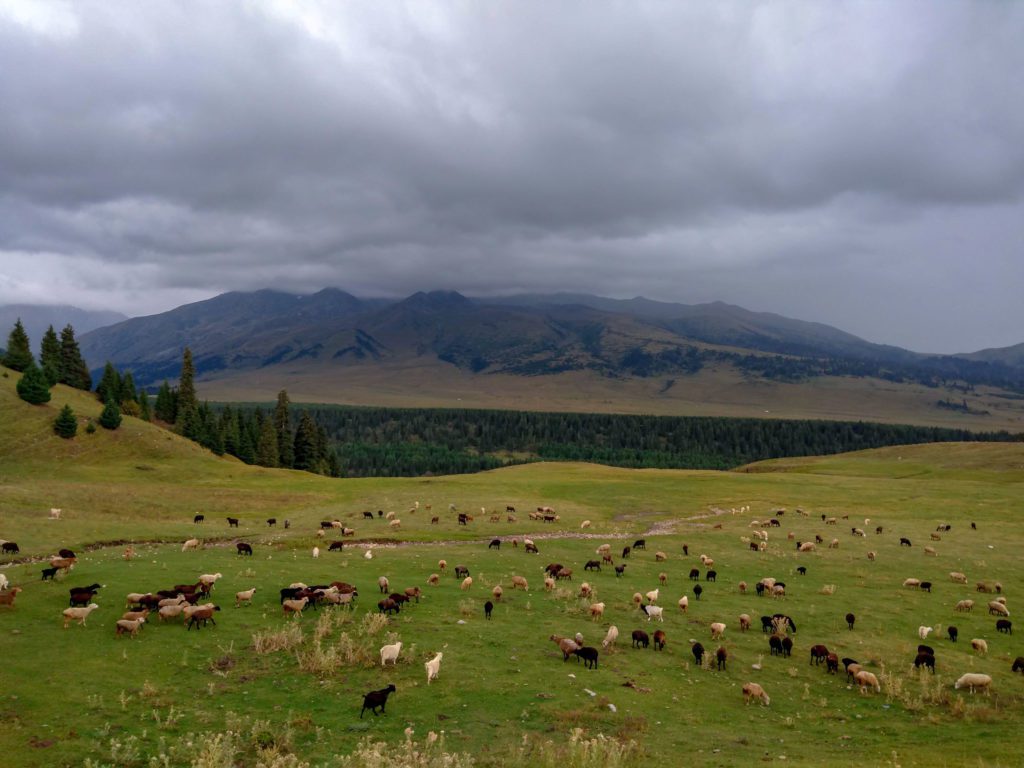
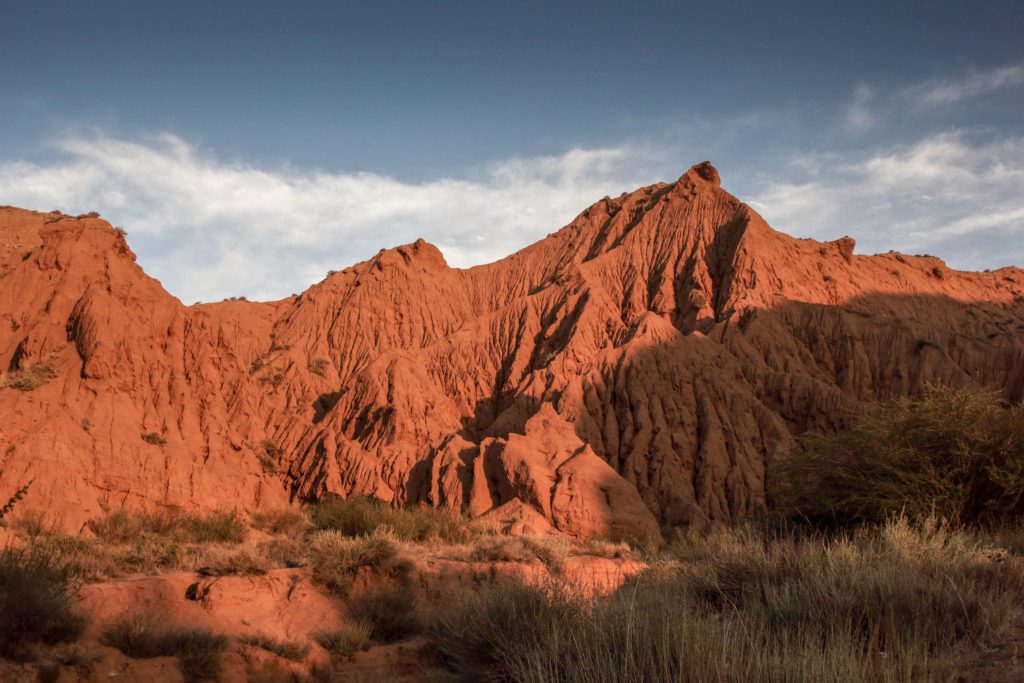
Cycling in Kyrgyzstan is not a piece of cake. It requires strength, endurance and good planning. The mountain passes will take your breath away (literally, because of the lack of oxygen). The constant fight against the washboard roads will remind you of all the worst swearwords you ever knew.
But the unique mix of nomadic culture, soviet history and nature so stunning that it seems unreal will guarantee that every day in Kyrgyzstan will be an adventure.
I visited Kyrgyzstan in the summer of 2019. This article was last updated in May 2024.
Jak dojechać?
Flights to Kyrgyzstan
The easiest way to get to Kyrgyzstan from most locations is by flight to Bishkek. Most travellers from Europe and America will need a layover in Istambul. I flew from Sarajevo to Bishkek with Turkish Airlines and returned with the same airline from Almaty to Prague.
You should also check the connections via Dubai with Emirates or Fly Dubai.
Sometimes, a cheaper alternative from Europe is to fly to Almaty in Kazakhstan. You can cross the border by bike (visiting the stunning Charyn Canyon on the way) or by marshrutka (minibus).
Dokumenty
Kyrgyzstan is the most accessible country in Central Asia. It offers visa-free entry for citizens of 69 countries, and citizens of most European countries can stay without a visa for 60 days. Check if your country is on the list on Caravanistan.com.
If you want to stay longer, you can renew your stay by crossing the border and re-entering the country. I met a British guy who practically lived in Bishkek and went on a trip to Almaty every other month, not caring about the visa.
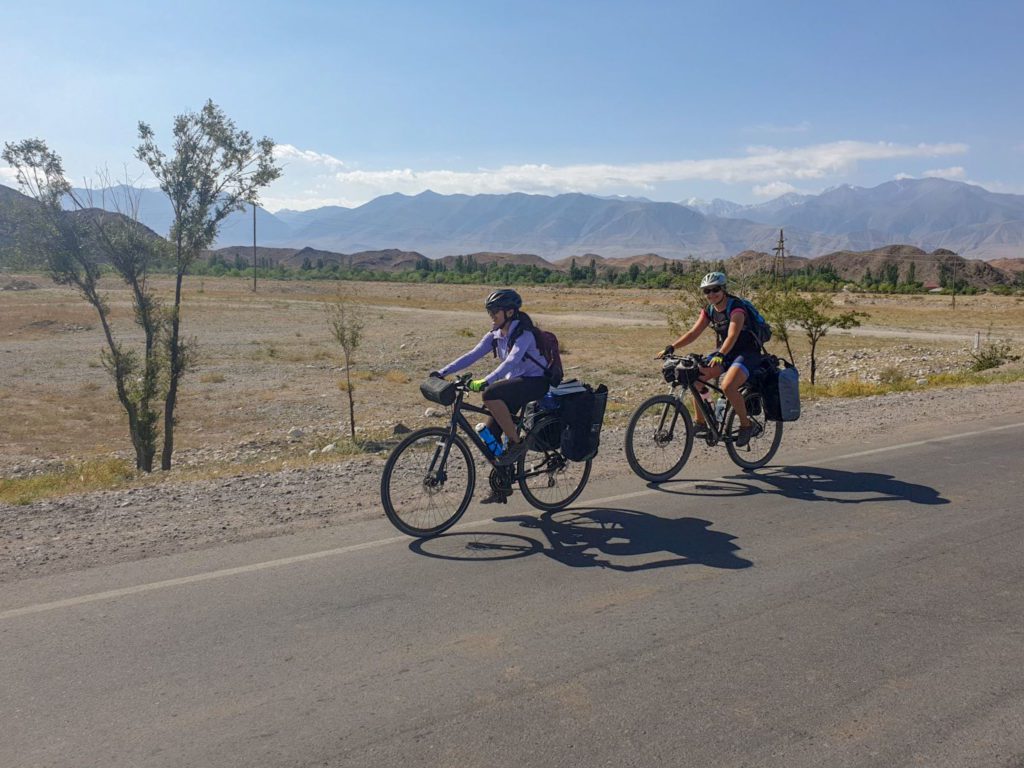
Border permit
To enter some border areas, you will need a special border permit. It usually costs around 20-25 euros. You will need it to visit Inylchek, Lenin Peak Basecamp, Chong Kemin Valley, Kel Suu, Chatyr Kol, and the Ak Sai Valley.
Contact CBT (Community Based Tourism Association) for help organising it. It usually takes seven days, so reach out in advance.
You can find a map of areas requiring a border permit on visitkarakol.com.
Bike rental in Kyrgyzstan
Most bicycle rental companies are in Bishkek. They offer modern mountain bikes equipped with rear racks and prepared for a long tour. Some of them only accept cash.
- Freebike offers various models of Giant mountain bikes for 15 euros/day. All bikes have a rear rack. Freebike can also provide a pump, repair kit, spare chain, pedals, brakes, hex key, etc. They have full-suspension bikes and e-bikes, too, and camping gear.
- Olga—They rent cross-country mountain bikes for 15 euros/day. You can also rent a full-suspension bike, an e-bike, and camping gear.
Bike shops
You should bring the crucial bicycle parts with you, as there are few bike shops in Kyrgyzstan, especially outside of Bishkek.
Bike shops in Bishkek
Bike shops in Osh
There is a small bike shop in Osh.
Solo travelling women in Kyrgyzstan
A solo travelling woman is still a rare sight in Kyrgyzstan. In rural areas, you might face some unwanted attention.
A fake wedding ring can help you avoid creepy comments and uncomfortable stares. People might ask you why you’re travelling alone and why isn’t your husband with you, so have a story ready.
Be careful when wild camping. If you can’t find a safe camp spot, ask the locals for permission to camp in their yard.
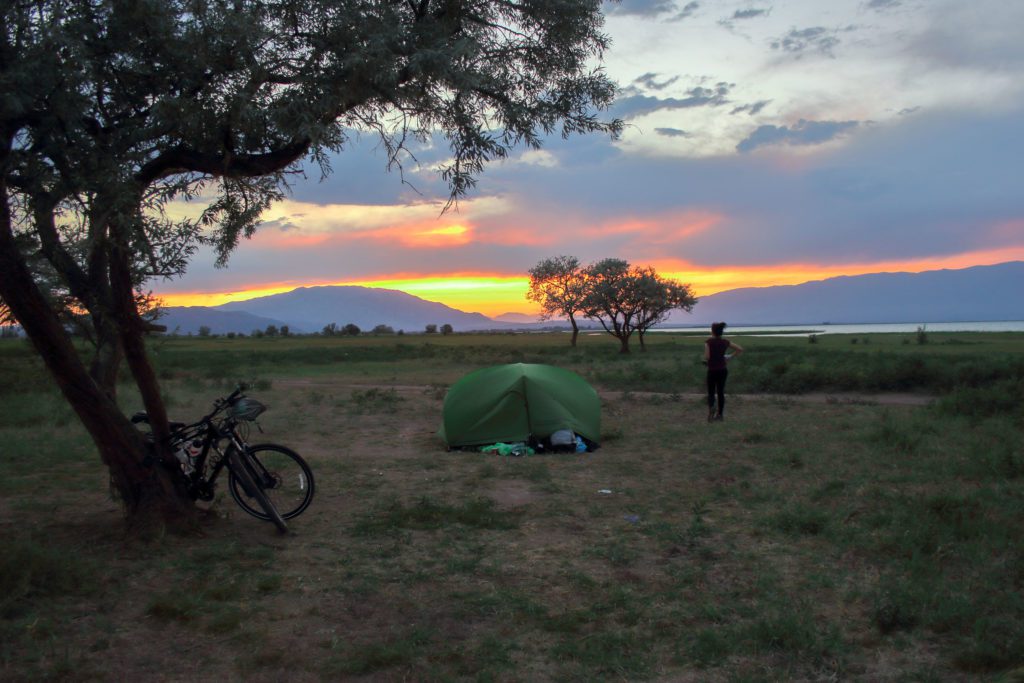
In general, Kyrgyzstan is not particularly dangerous for solo female travellers. However, I heard from some experienced cycle tourers that they felt less safe there, for example, in Tajikistan.
I also had some unpleasant experiences (luckily, nothing serious). You can read my stories tutaj
Ukształtowanie terenu
93 % of Kyrgyzstan is covered by mountains, and almost half is at an elevation higher than 3000 masl. You must be prepared for exhausting inclines. Low oxygen can make the ride even more difficult in the higher parts of the mountains. Cycling in Kyrgyzstan is definitely Type 2 Fun—you will suffer, sweat, and get cold and tired, but you will look back at your trip with a big smile a few months later.
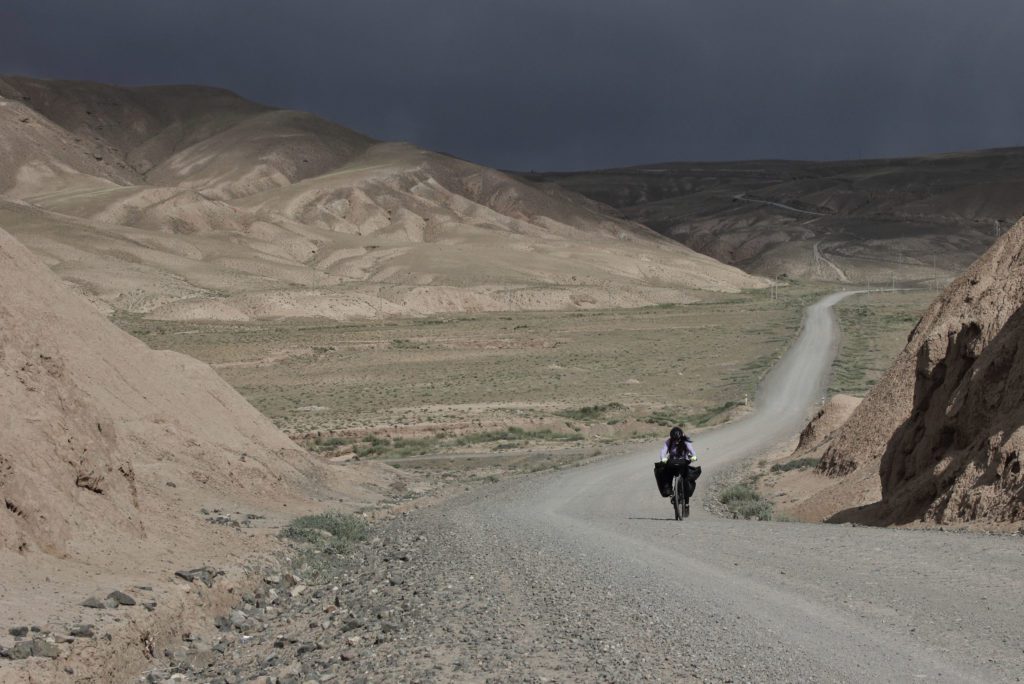
Drog, ścieżki rowerowe i ruch
Prepare for a lot of gravel and the famous Kyrgyz washboard—small, frequent bumps that make cycling slow and annoying. More than 60 % of the country’s roads are gravel or dirt.
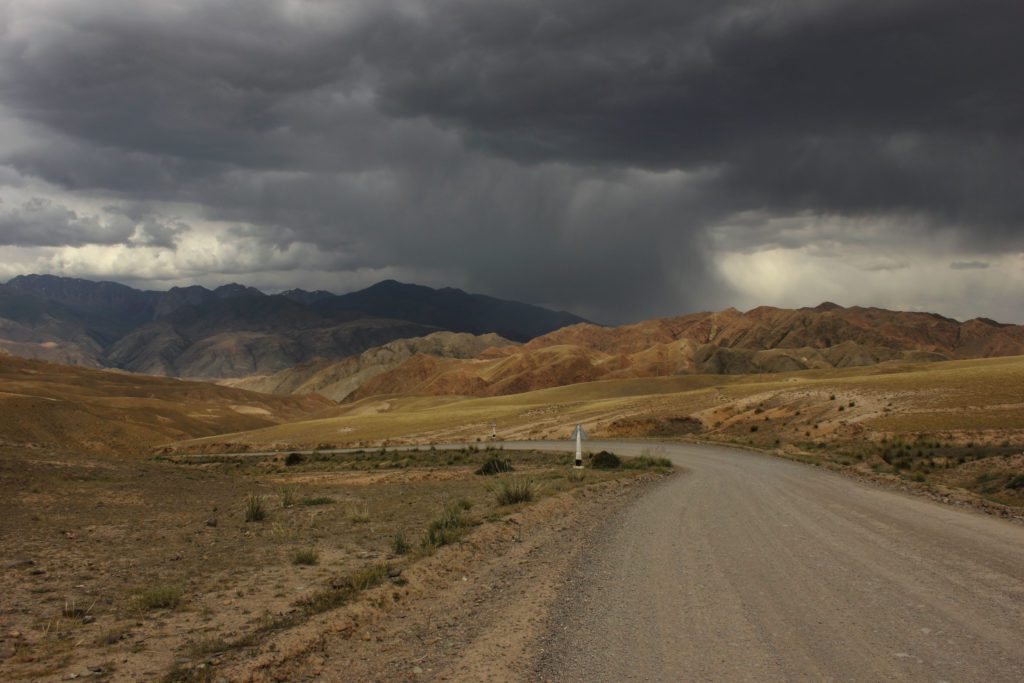
The main road between Bishkek and Osh has been renovated and is covered with perfect asphalt. The perfectly straight and lonely road from Naryn to the Chinese border is also well-maintained.
Kyrgyz drivers do not show much consideration for traffic rules and cyclists. They often speed, take over too close, and use the horn too often.
I have distinguished three types of Kyrgyz honking: 1. cheerful, uplifting series of short honks followed by waving from the open car window. 2. warning “Careful, I am gonna take you over soon” single horn. 3. Aggressive “get the hell out of that road”-long honk, followed by taking you over too fast and close. If you hear number 3, slow down and stop on the side of the road.
Except for the main roads, there is not much traffic. Usually, you will face a dilemma: you take a quiet but challenging mountain road of poor quality or stay on something with decent tarmac and fewer climbs but shared with crazy drivers.
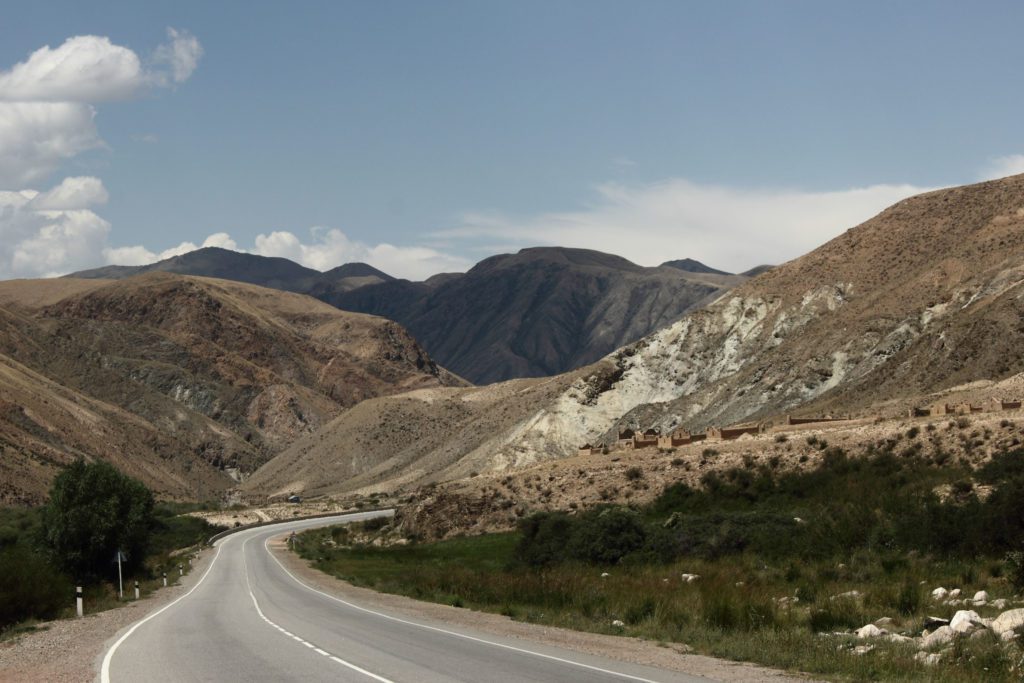
The road along the shore of Issyk-Kul can be pretty busy in the summer. The southern site tends to be a bit quieter. The tarmac is bumpy sometimes. If you want to feel safer, the roadside is wide. Unfortunately, it is also full of trash and shattered glass, so you must be careful not to get a flat tyre.
Tunele
There are few tunnels in Kyrgyzstan, but most cyclists must decide whether to go through the infamous Töö Ashuu Tunnel on the M41 road from Bishkek to Osh. It is poorly ventilated and narrow. The alternative is the old gravel road through the Too Ashuu Pass (3.594m). The road is quite steep and narrow, so it will be a challenge, but it is still better than going through the toxic exhaust fumes.
Train and buses
Taking A bicycle on a marshrutka in Kyrgyzstan
You can take your bike on a marshrutka (minibus) if there is space. Be at a bus stop ahead of time—the chance of getting space for your bike will be higher. You might have to disassemble your bike to fit in the trunk.
The prices are not 100 % defined, so bargain to avoid getting ripped off. I once compared the price I paid for taking the bike on marshrutka with a friend and discovered she spent 60 % less on the same route.
Bus schedules are sometimes rather a suggestion than an actual schedule. Don’t be surprised that the driver waits for more passengers, even if the bus was supposed to leave 30 minutes ago.
Taking A bicycle on a train in Kyrgyzstan
In the summer season, you can take your bicycle on the train from Bishkek to Balykchy (Rybachye) near Issyk Kul Lake. The train is slow – less than 200 km takes more than 5 hours (the same route by marshrutka takes less than 3 hours).
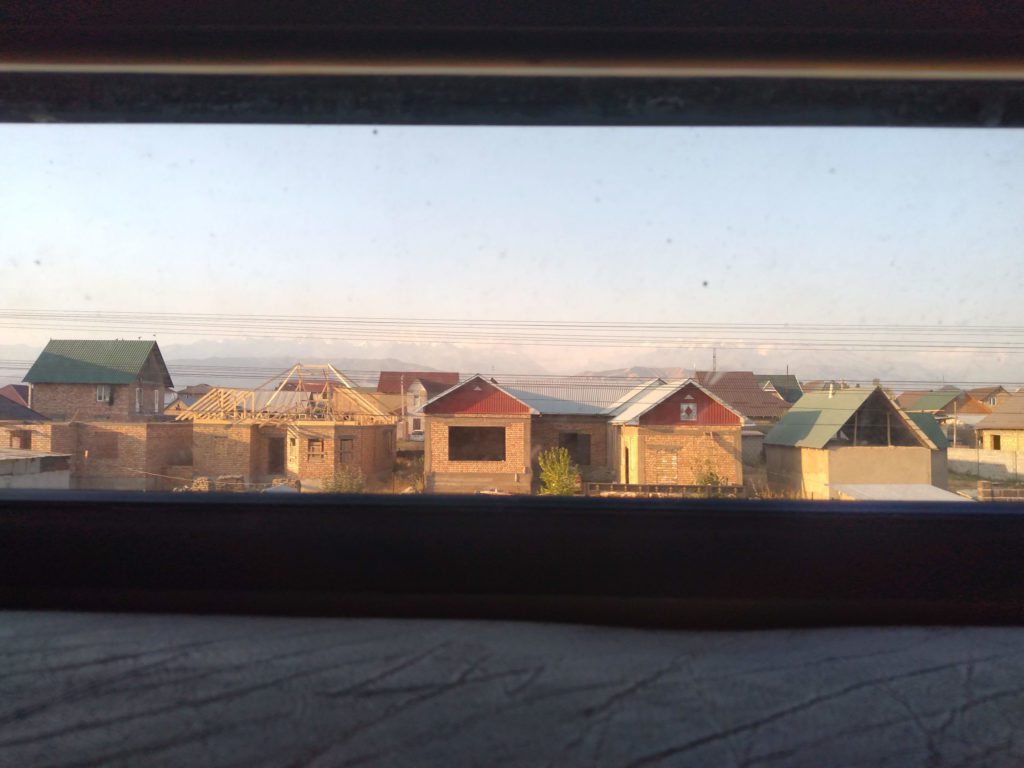
However, the train ride is a unique experience, with amazing views behind the windows and babushkas selling traditional warm snacks. It is not popular among tourists. We were almost the only ones, and the conductor even wanted to take a picture with us.
The train is an old soviet train with no special bicycle carriage. At the train station, be alert and quickly catch the conductor to ask where you should go with the bike. I remember it as a lot of chaos and stress, as we were standing on the wrong side of the platform and had to run a lot. The doors were narrow and the stairs steep, so loading the bike was challenging.
You can buy the ticket at the train station. In 2019, I paid about 2 euros for myself and my bicycle. The train runs only in summer. The current timetables are difficult to find online, so you must check at the train station.
Pogoda
The best time to visit Kyrgyzstan for a bicycle tour is mid-June to early September. In spring, most mountain passes are still covered with snow; even the semi-nomads move to the valley with their yurts.
The weather in Kyrgyzstan can be unpredictable all year round, as most of the country lies at a high altitude. In lower areas, the summers are hot and dry. The heat can be unbearable in Bishkek and Osh, reaching even 40°C.
Up in the mountains, freezing nights are not uncommon, even in the middle of the summer. Make sure to bring a warm sleeping bag and a good tent. Proper waterproof clothing and warm socks and gloves are also a must.
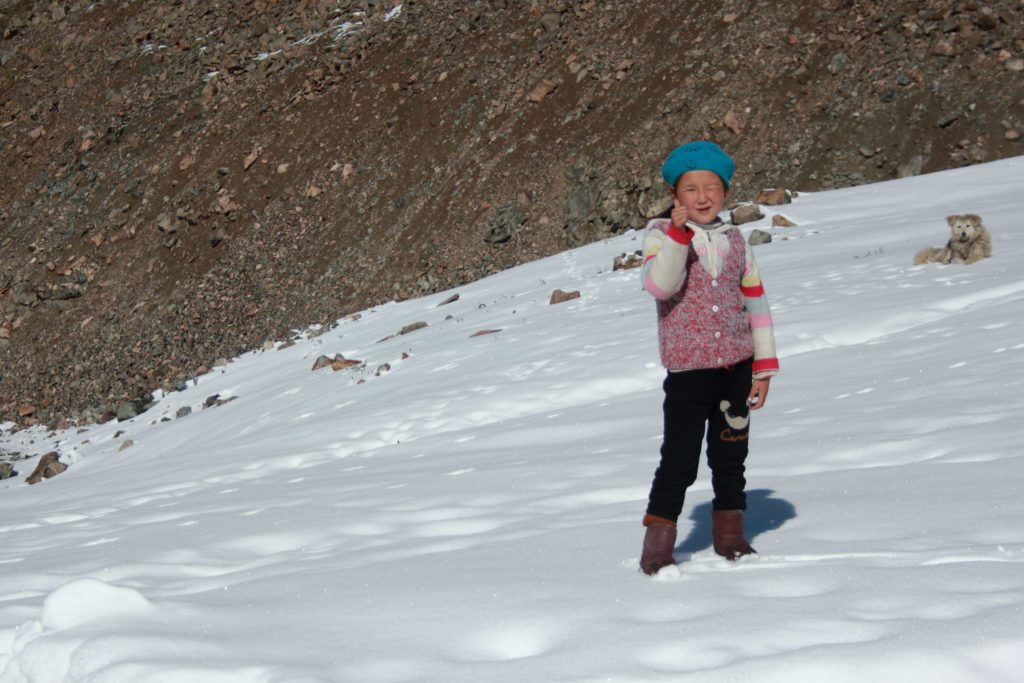
Wild camping in Kyrgyzstan
With its nomadic traditions and vast, unspoiled mountains, Kyrgyzstan is a perfect country for wild camping. It is allowed, and finding an ideal spot for the night will not be difficult.
Some of the best camping spots I had were at Son-Kul Lake. Several yurt camps are located on the northern shore, so you don’t have to pitch your tent.
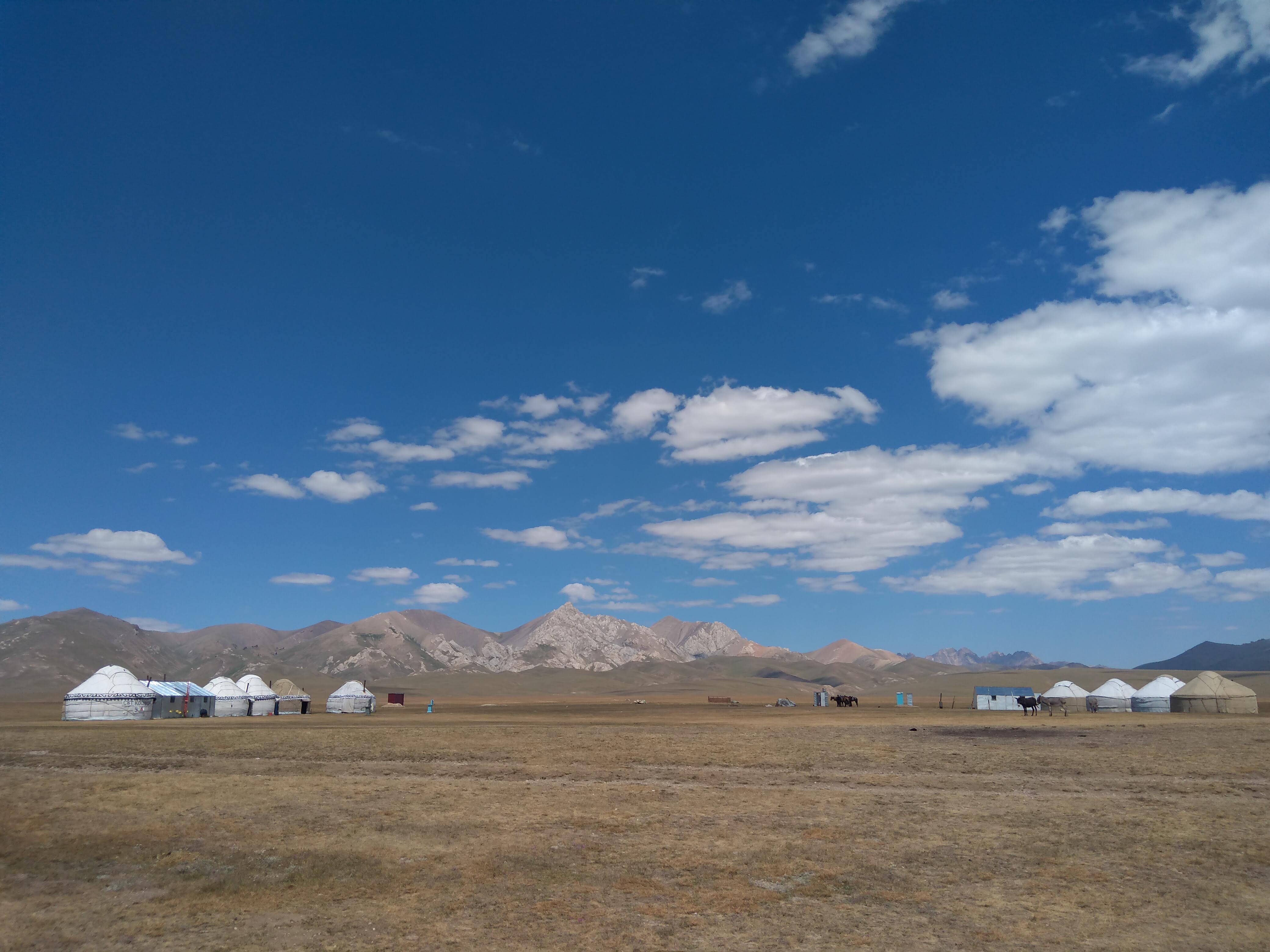
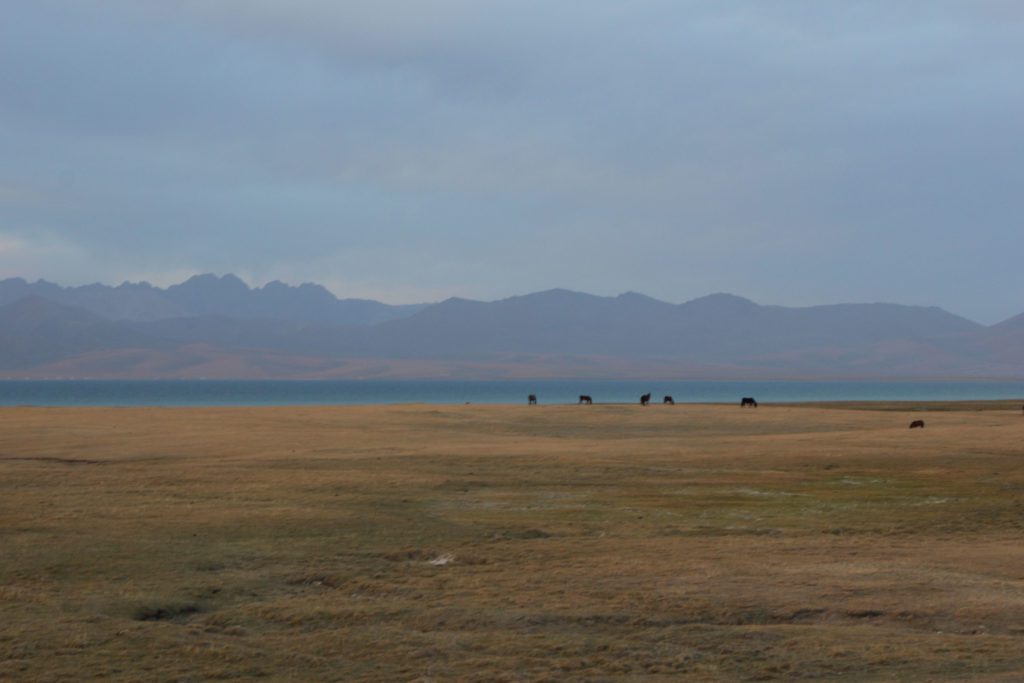
I liked the southern side of the lake better, as it is more secluded. The steppe is enormous and was one of the most magical places I ever slept in. Due to the high altitude (over 3000 m), the nights tend to be cold, so bring a warm sleeping bag.
There are also good camping possibilities on the shore of Issyk Kul, the second-largest mountain lake in the world. You can take a swim in the surprisingly warm waters and refresh yourself.
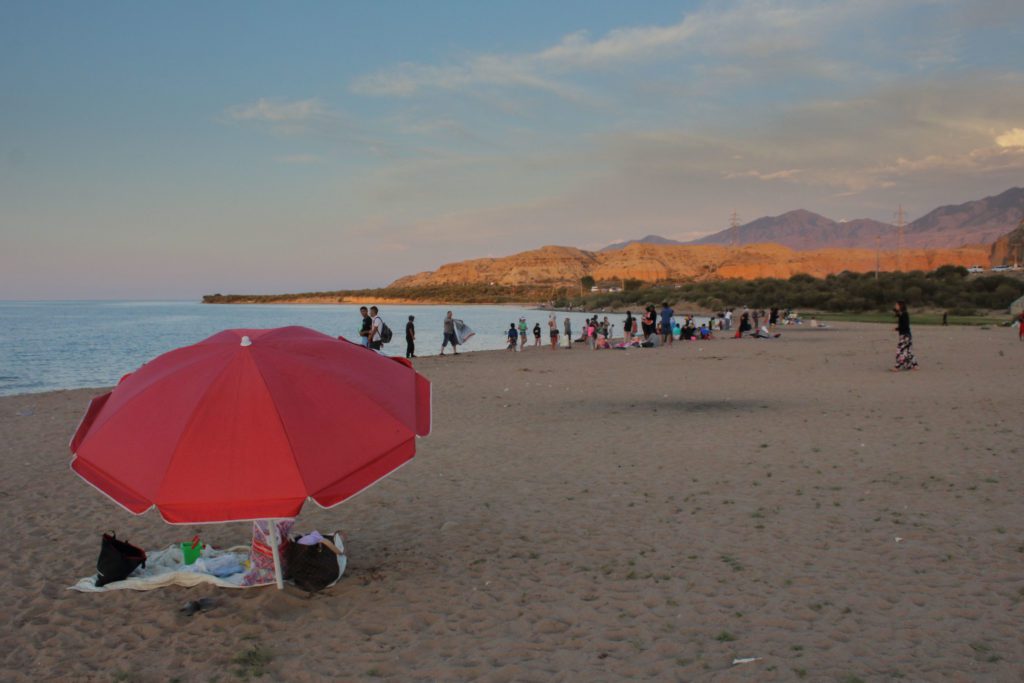
Paid accommodation
There are plenty of guest houses around Issyk-Kul where you can stay for very affordable money. Most of them also offer food.
There are yurt camps that host tourists in the mountains and the more popular areas. Don’t expect to take a warm shower there, as most are bare, and the best they can offer is an outdoor shower.
We stayed at Yurt Camp Azamat at Son-Kul. The curent price is 25 euros per person, including breakfast. For an additional fee, you can also order dinner (we had some delicious plov).
Pieniądze
The currency is Kyrgyzstani som (KGS).
100 KGS = ca. 1 EUR
You can exchange EUR and USD in all exchange offices in bigger towns.
You’ll find plenty of ATMs in Bishkek, Karakol and other major cities. Make sure to withdraw enough cash before heading off to the countryside.
Most homestays, small shops, and bazaars only accept cash, so always carry enough change with you. Larger hostels, restaurants, and shops in bigger cities accept card payments (I used MasterCard by Revolut).
Internet and the local SIM card
Getting a SIM card in Kyrgyzstan is easy. You can get it at the Manas airport in Bishkek. Some hostels sell them (or offer them for free!) at their front desks. The biggest operators (Beeline, Megacom, and O!) have shops in all the major cities.
I used Megacom – the operator with the best coverage in Kyrgyzstan. Even with the best coverage, many places don’t have cellular service. It will work perfectly in the towns, but expect a social media detox when cycling through the mountains.
The prices for the local SIM are low (e.g. 5 euros for 33 GB for 30 days!). If the package you bought turns out to be too little, you can top it up in a top-up machine. You will find them in shops in most towns.
Odwiedź this article for a more comprehensive comparison of Kyrgyz SIM cards.
Jedzenie i dostęp do wody
Expect long stretches without civilisation in the mountains. Bring a food supply for a couple of days. In the villages, the shops are usually not well stocked, offering a basic selection of bread, cheese, and sweets. It’s best to buy some long-lasting food in the bigger towns.
My favourite snack for the road was Chechil – local smoked cheese that stays fresh for days and is deliciously salty.
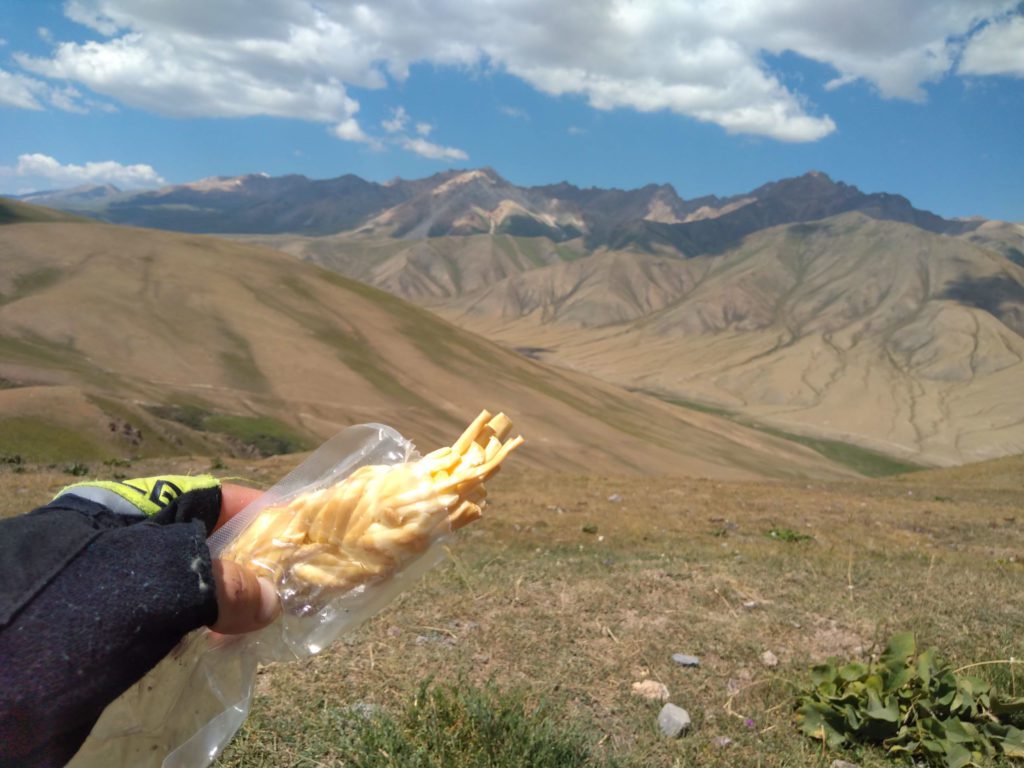
Bishkek, Kochkor, Karakol, Osh and Naryn have bazaars with tasty, fresh fruits and great food. You can also find bigger supermarkets there, where you can stuff your panniers before heading into the wild.
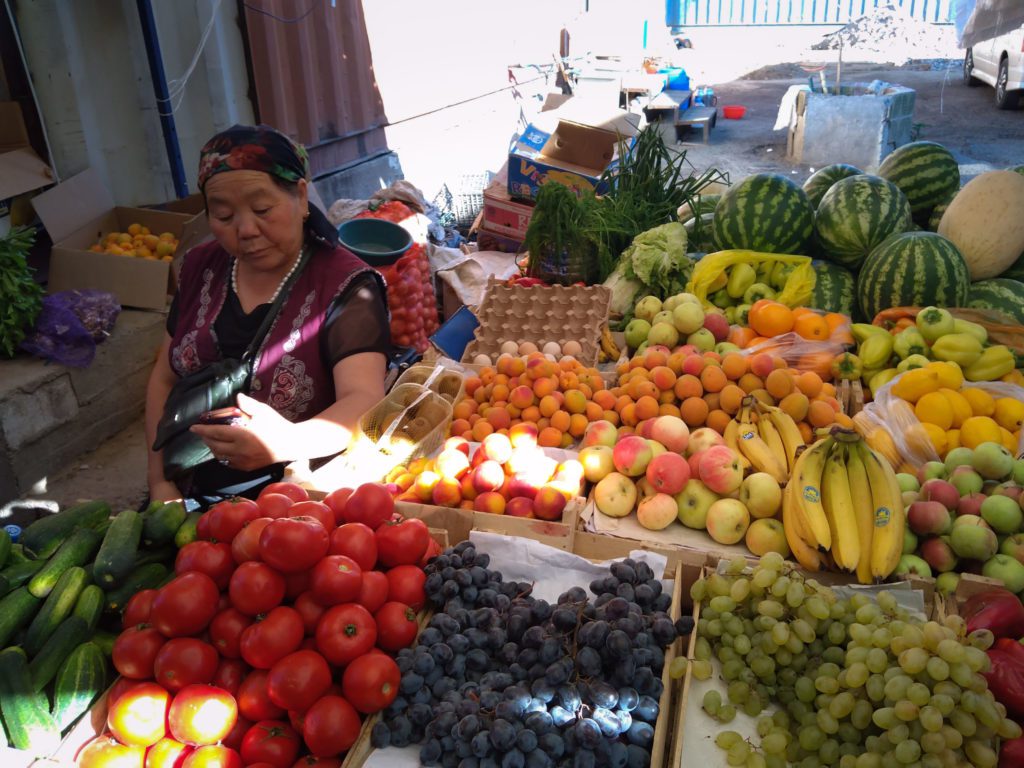
There are many streams in the mountains, and you can get water from them. However, it is best to purify the water (I use a LifeStraw filter; other options are water-purifying tablets, for example, Aquatabs).
Is Kyrgyzstan vegetarian-friendly?
Everybody warned me I would be starving in Kyrgyzstan as a vegetarian. The reality was much better than I thought. In Bishkek and Karakol, you will find plenty of restaurants with vegetarian food. In Karakol, try Ashlan-Fu – a Dungan noodle speciality. You can have it in one of the diners at the bazaar.
I recommend Alma Ethno Cafe, which offers many vegetarian dishes, such as Lagman and ramen, for 100-140 som (1-1,5 euros).
Język
Not a lot of people speak English, especially in the countryside. Kids in towns along the Issyk-Kul knew some English and were keen to practice it. Basic knowledge of Russian will help you to get around. Only in a few remote areas in the mountains can you meet people who speak only Kyrgyz. If you know Turkish, it will make it easier to understand Kyrgyz.
Best cycling routes in Kyrgyzstan
Balykchy-Kochkor-Song-Kul-Moldo Ashuu-Naryn
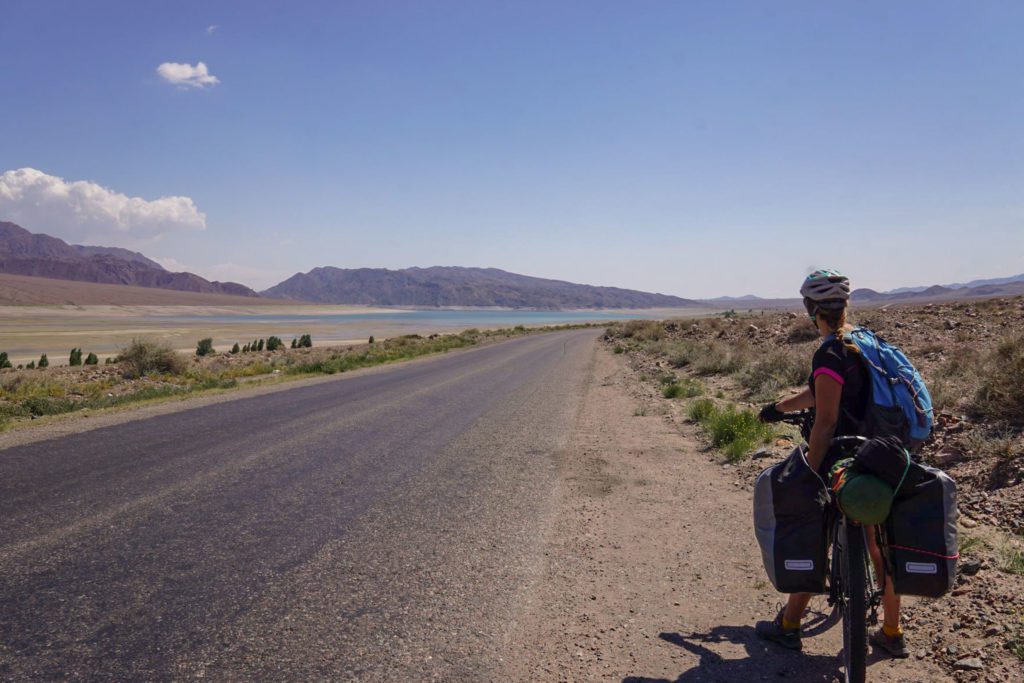
From Balykchy (1630 masl.), you will slowly climb to the highest point – Kalmak Ashuu Pass (3446 m). During the descent on a bumpy road, you can admire the sparkling blue waters of Song-Kul Lake – one of the most popular places in Kyrgyzstan. You can still enjoy total tranquillity there – finding a secluded camp spot on the boundless plateau around the lake is easy.
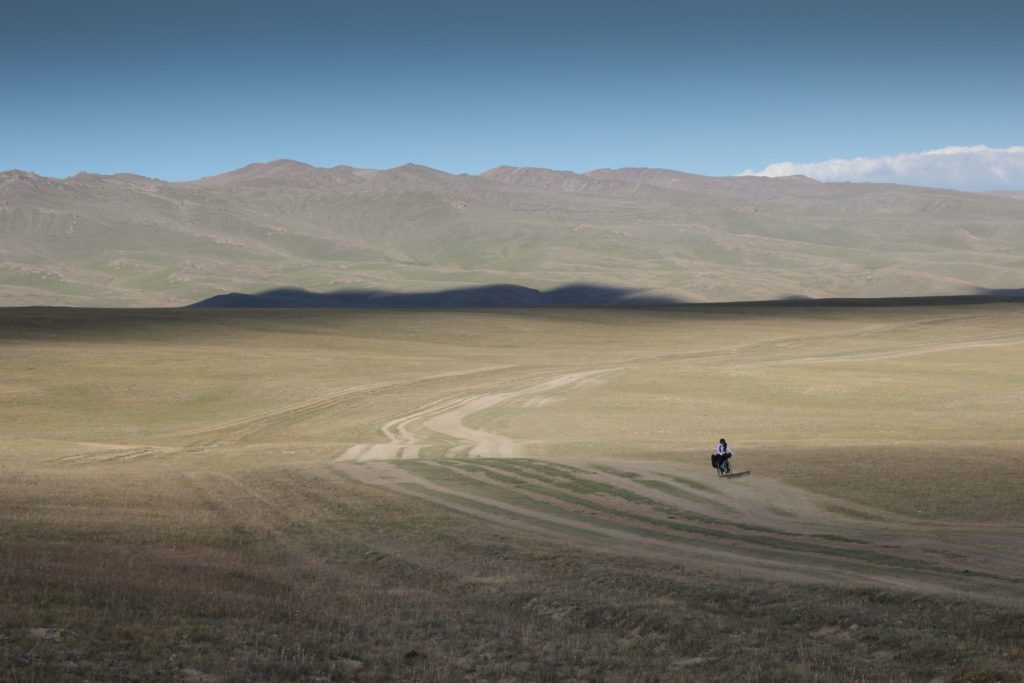
With its tight switchbacks, the road through Moldo Ashuu Pass is one of the most beautiful roads I’ve ever seen. There is a good chance you will not see a living soul for kilometres. The grass on the surrounding hills looks like suede, and the scenery seems surreal.
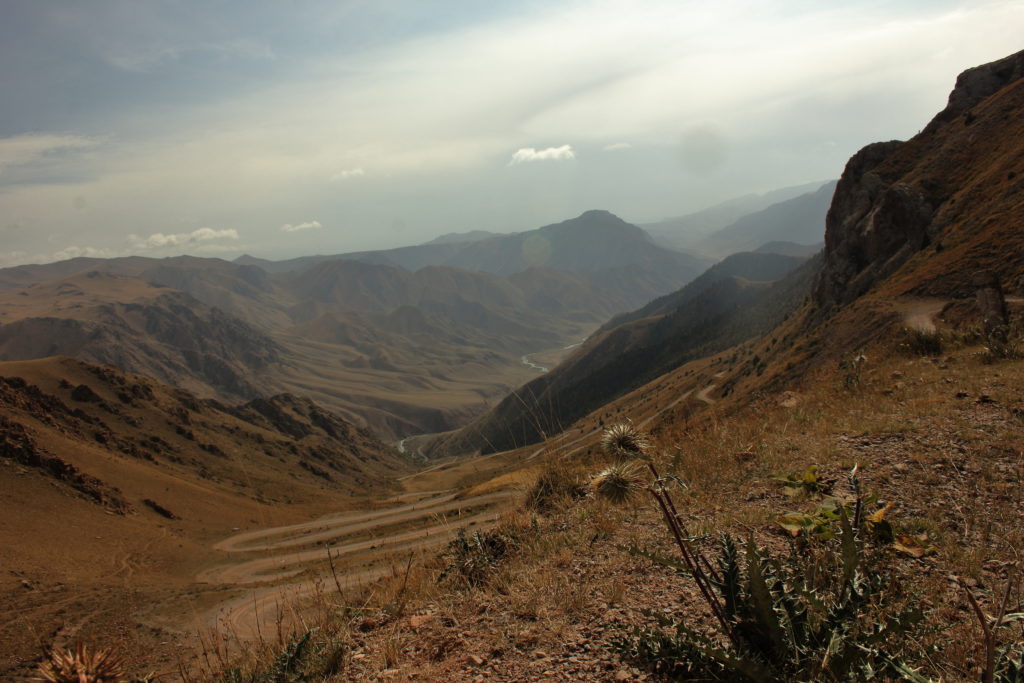
After visiting Naryn, you can either return to Kochkor and ride along the southern shore of Issyk-Kul (see the trip description below) or continue through the mountains to the Tosor Pass. It will be a real challenge – the road to the 3896 metres high pass is steep and rocky, and the weather conditions can be tricky.
The southern shore of Issyk-Kul
The ride along the southern shore of Issyk-Kul Lake is a good option if you want to skip some exhausting climbs or if the mountain weather is miserable. It will also allow you to visit some touristy highlights in Kyrgyzstan, like Bokonbaevo (famous for traditional eagle hunting) and Skazka Canyon. You will also have a chance to enjoy the fantastic sandy beaches and benefit from the healing properties of the water in Issyk-Kul.
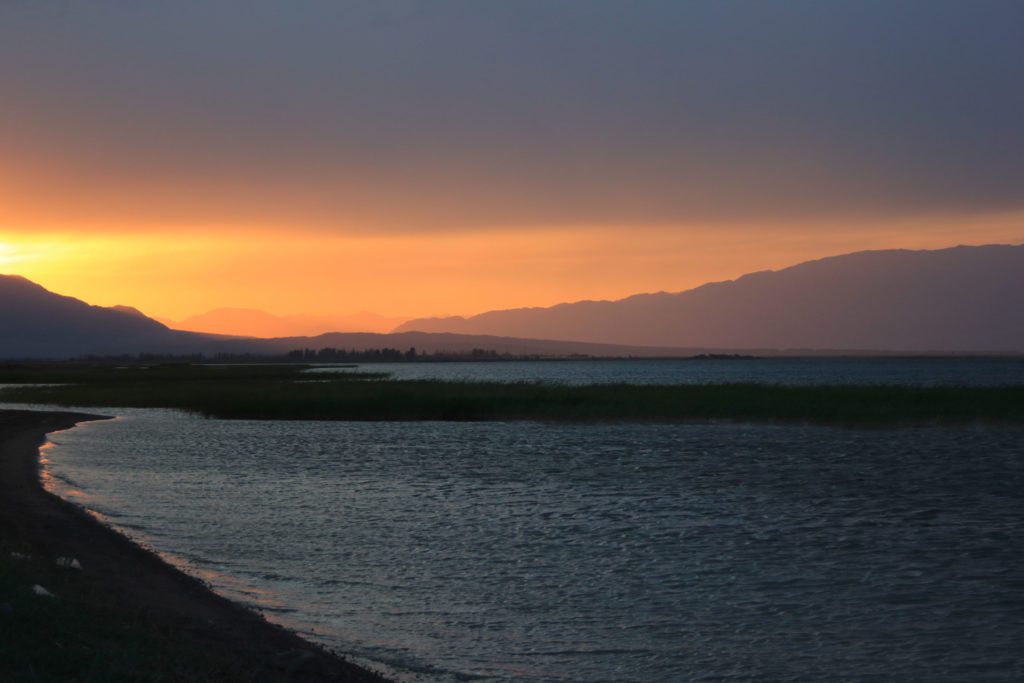
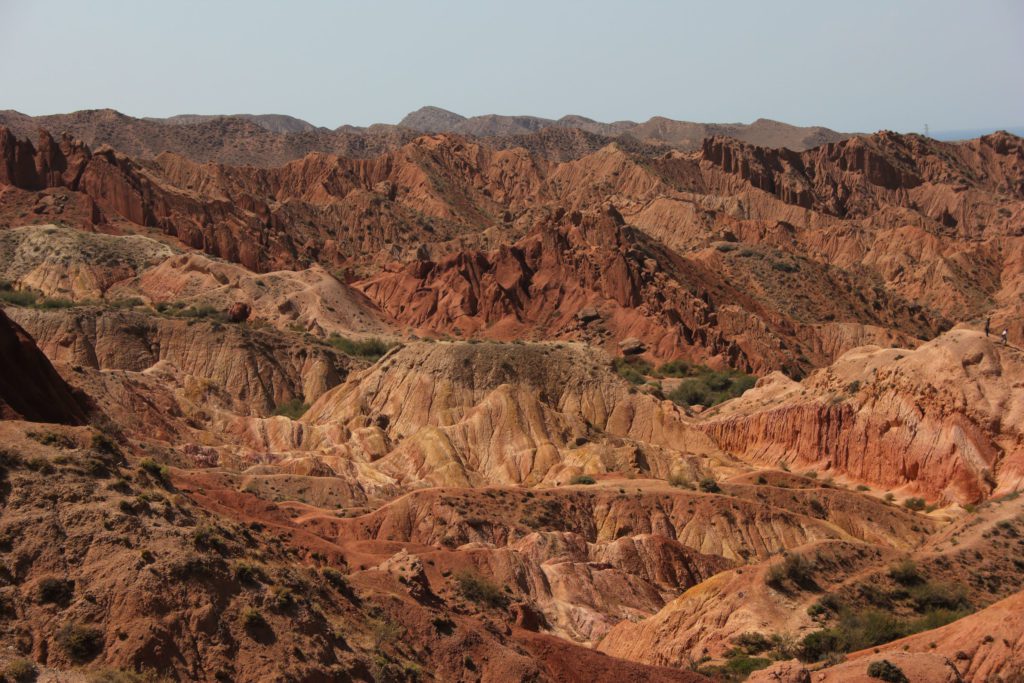
This route leads, unfortunately, through a relatively busy road.
Take a detour to see the old soviet sanatorium and the Seven Bull Rocks in Jeti Oguz. Then go to Karakol, leave your bike in the hostel for two or three days and head on a trek to Ala-Kul Lake. With a mountain bike, you can also explore the Karakol Valley. I also recommend cycling to Altyn Arashan. A long uphill ride on a rocky road is worth the effort – the valley is green and full of diverse wildlife (one of the few places in the world where snow leopards still exist), and your muscles can recover in natural hot springs!
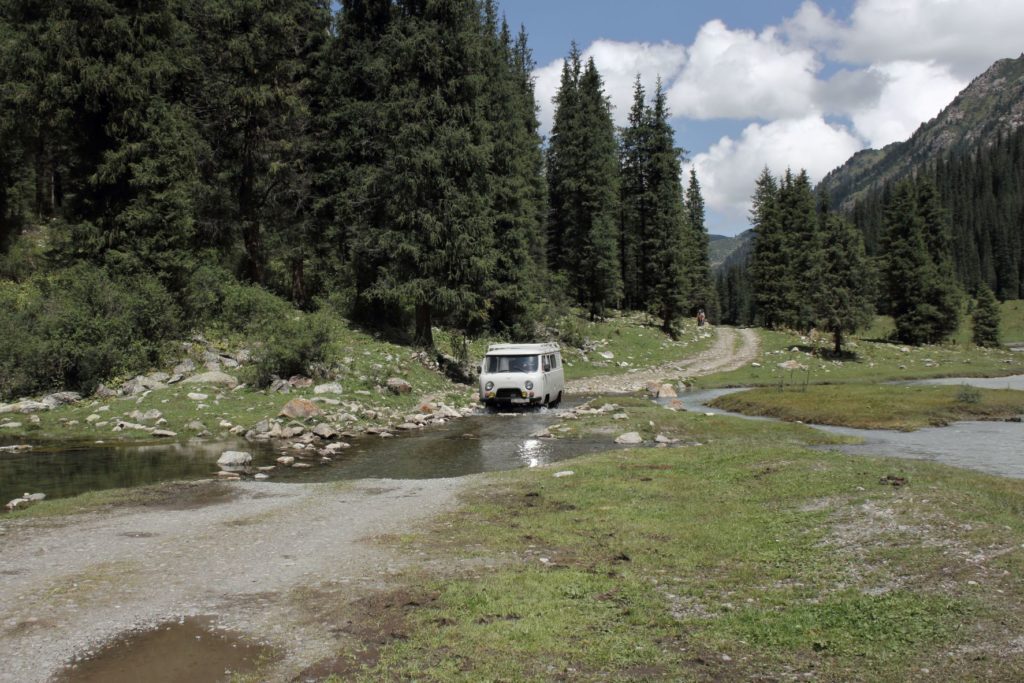
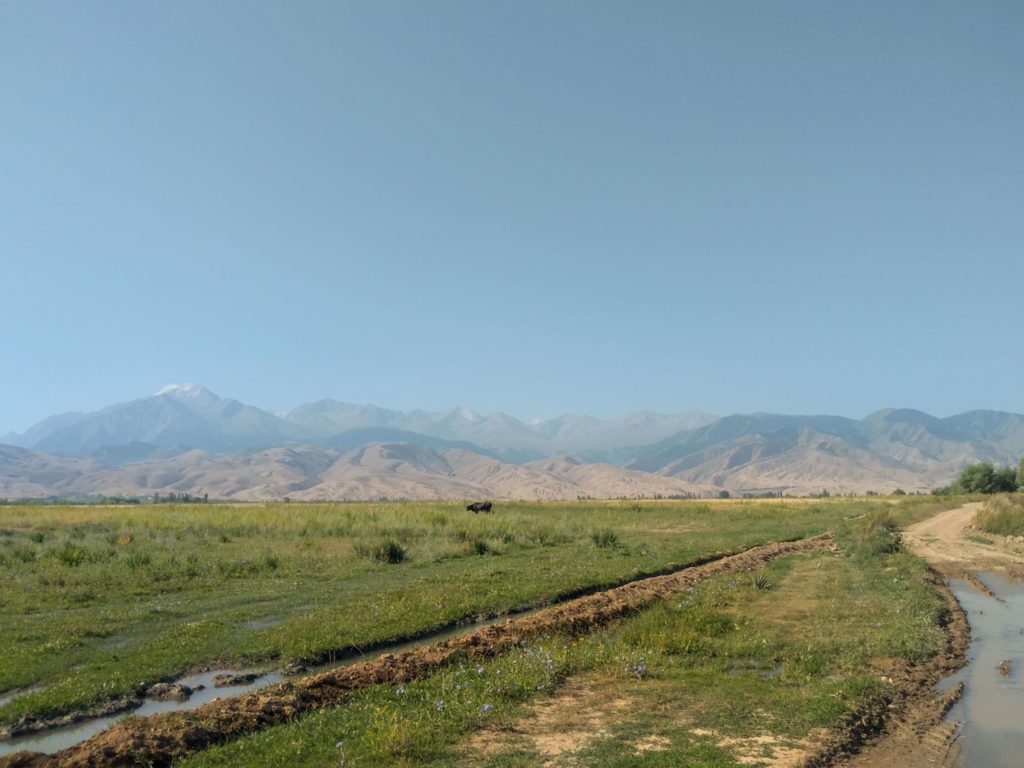
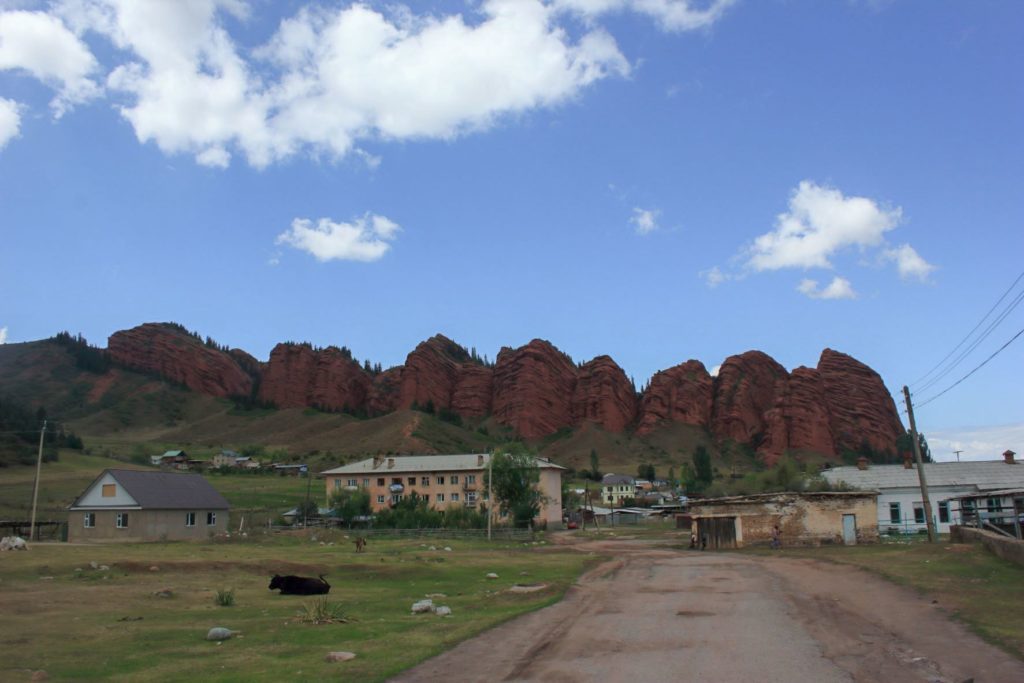
Karakol – Chon-Ashuu – Engilchek
One hundred forty kilometres from Karakol lies a semi-abandoned mining town, Engilchek. After the collapse of the Soviet Union, the mines were closed, and most people lost their jobs and left. Now, only 30 families live there, and many buildings are abandoned. (Important: You need a border permit to go to Enilchek.)
On the way to Engilchek, you must climb a 3883-metre-high Chon-Ashuu Pass. The road is not very steep but bumpy and rocky. Luckily, you can divide the climb into two parts and recover camping surrounded by scenic high mountains.
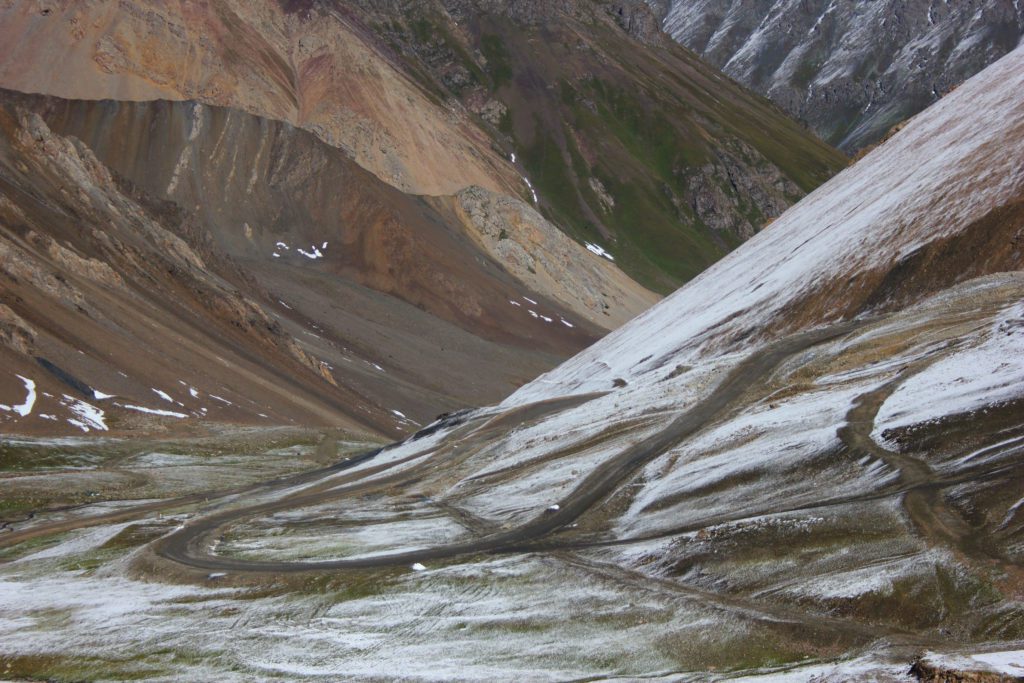
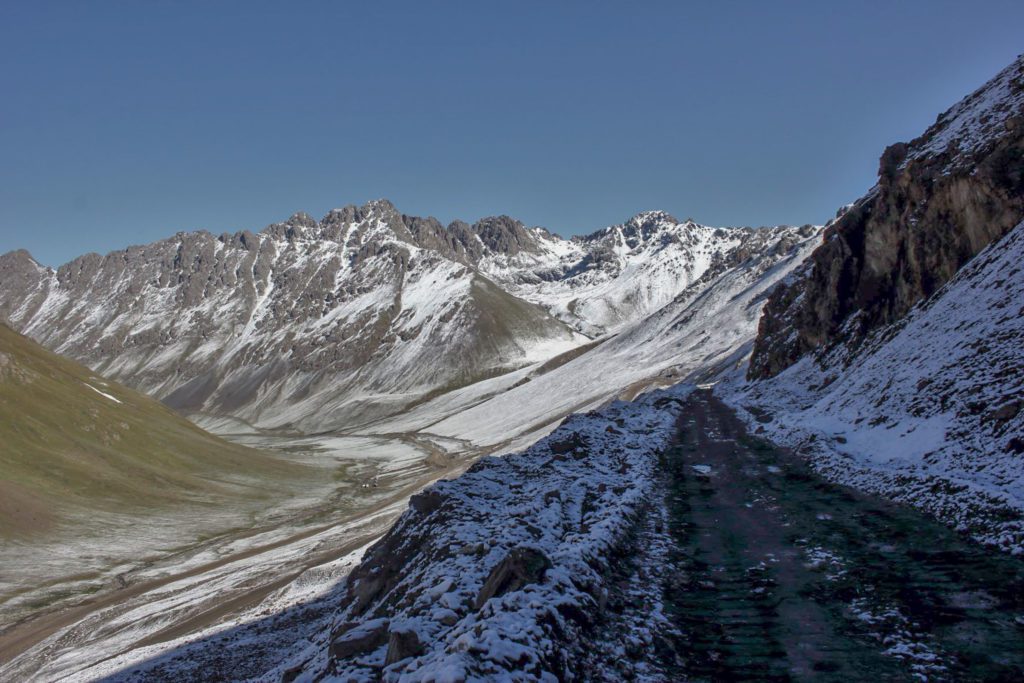
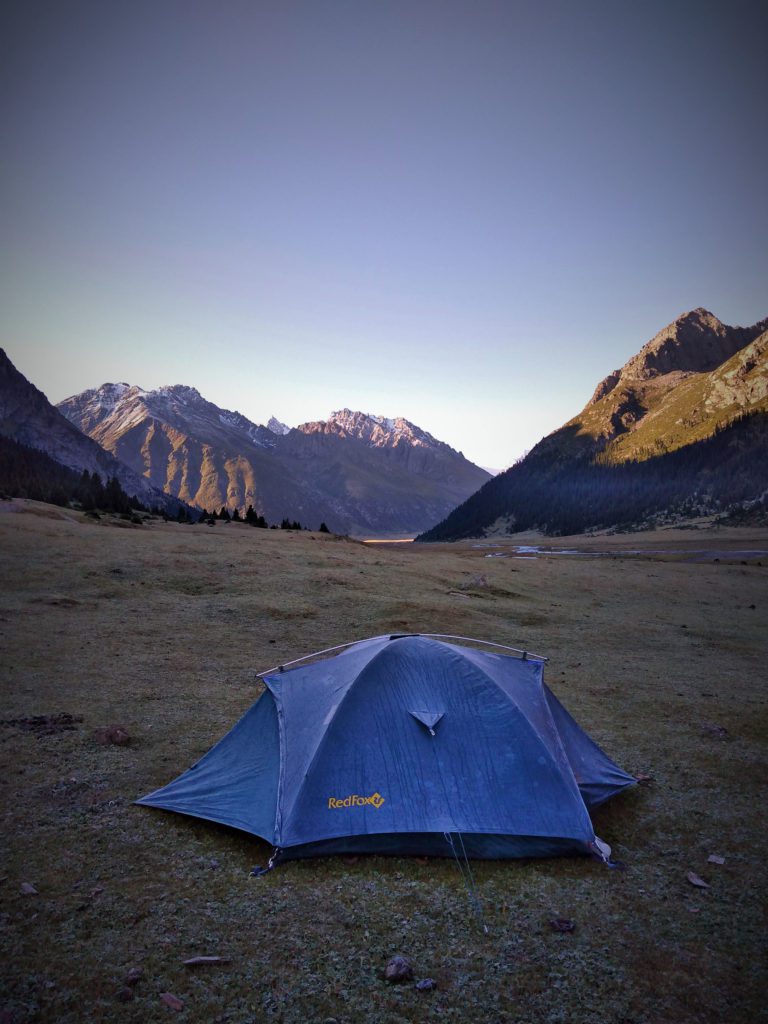
Odwiedź na tej stronie for a map of the best cycling routes, camps, yurts, and CBT offices.
My map of hotspots in Kyrgyzstan
Źródła
What to read before going to Kyrgyzstan? Where can you find information about your bicycle tour to Kyrgyzstan?
Online resources
caravanistan.com – the website and forum are the best sources of information for travel to Central Asia
ountravela.com – maps and itineraries for off-road trips in Kyrgyzstan
thegonegoat.com – an article about cycling in Kyrgyzstan written by Pashmina – my cycling buddy during the trip to Kyrgyzstan in 2019
Books
Laurence Mitchell, Kyrgyzstan: The Bradt Travel Guide
Erika Fatland, Sovietistan. Travels in Turkmenistan, Kazakhstan, Tajikistan, Kyrgyzstan, and Uzbekistan
Are you planning a bicycle tour in Kyrgyzstan? Don’t hesitate to let me know in the comments if you have any questions!
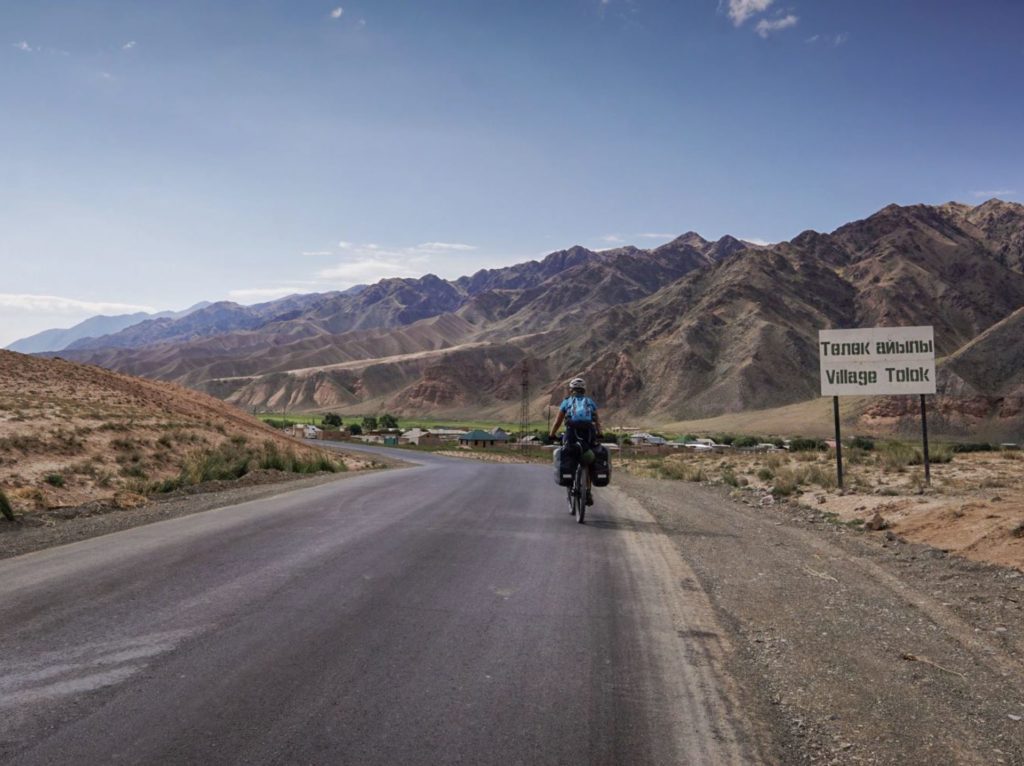
Odnośnik zwrotny: Bicycle touring inspiration: Pat Patterson - first American to cycle the Soviet Union - Wobbly Ride
Odnośnik zwrotny: Kyrgyz tales, part 1: Always look on the bright side - Wobbly Ride
Odnośnik zwrotny: Sakwy na wyprawy rowerowe - Crosso Dry czy Ortlieb?
Odnośnik zwrotny: Best foods for bicycle touring - a dummies guide - Wobbly Ride
Odnośnik zwrotny: Jak naprawić zepsuty namiot?
Odnośnik zwrotny: The nitty-gritty of preparing for sabbatical and long-term travel - Wobbly Ride
Odnośnik zwrotny: Inspiration til cykelture rundt i Europa – Med tog fra Danmark til udlandet
Hi. Thanks for the very useful tips. About free camping in remote areas, in the mountain, for example next to woods, is there the risk of receiving the visit of bears and wolves during the night or encountering them while cycling? Thanks
Technically, there are some bears and wolves in Kyrgyzstan but I never had encountered any, nor have I ever heard about other travelers seeing them while cycling or camping. In very remote areas, you might want to consider storing your food somewhere secure outside of your tent, just in case. Enjoy your trip!